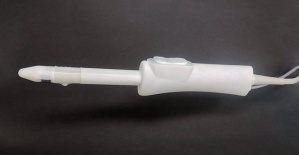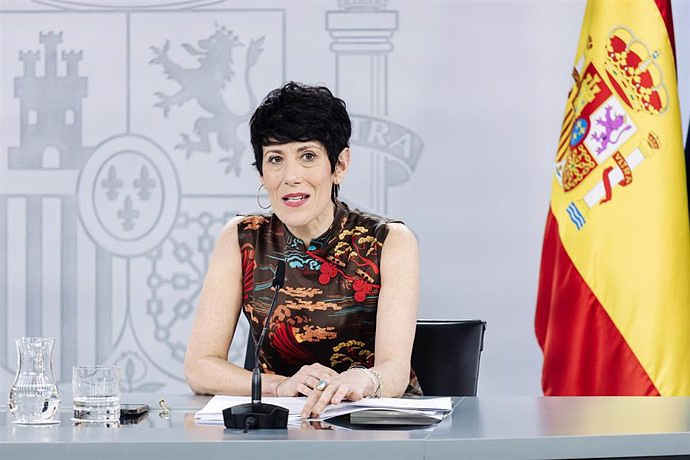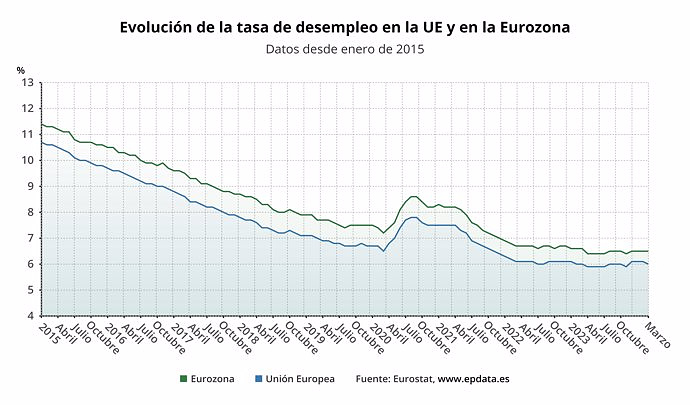He proposes that relievers be given indefinite contracts and that their salaries be more similar to those of partial retirees.
MADRID, 10 Abr. (EUROPA PRESS) -
The Government has proposed to social agents a new regulatory framework to make work and pension compatible in which, to collect 100% of the pension, at least five years of active work will be needed after reaching the ordinary retirement age, according to the document presented to unions and employers at the social dialogue table on pensions to which Europa Press has had access.
This is an initial proposal for the reform of the so-called active retirement, which makes it possible to make pension and work compatible after the ordinary retirement age, which the Ministry of Inclusion, Social Security and Migration wants to negotiate with social agents.
In its proposal on this modality, the Government maintains the need to delay retirement for at least one year in order to make retirement compatible with the pension and the incompatibility with the delay supplement is eliminated, as well as the requirement for a complete contribution career.
Once the delay in retirement occurs, generating the right to the delay supplement introduced by the last pension reform to encourage later retirements, it is proposed that the percentage of pension to be received by the retiree who remains active gradually increases. , depending on the time it takes to leave the labor market.
Thus, the Government proposes that, after a year of delay, work be compatible with 30% of the pension; With two years, 40% of the corresponding pension would be received; with three years, 50%; With four years, 75% would be collected, and with five or more years active, the right to receive 100% of the pension would be generated.
The current regulation of active retirement to make the contributory retirement pension compatible with the performance of any work as an employee or self-employed person does not allow receiving 100% of the pension unless the activity is carried out on a self-employed basis and it is proven to have been hired. at least one employed worker. The reform proposed by the Government eliminates the singularity for hiring an employee.
Furthermore, the current rule states that the amount of the retirement pension compatible with work will be equivalent to 50% of the amount initially recognized, once applied, if applicable, the maximum limit of the public pension, or the one being received, in the moment of beginning of compatibility with work, excluding, in any case, the minimum supplement, whatever the working day or the activity carried out by the pensioner.
In a final provision of the General Social Security Law, the possibility of extending this 100% compatibility to employed workers and the rest of self-employed workers was already foreseen in the future and that is precisely what is being negotiated. the Government with the social agents.
The current regulation does not allow the pensioner who accesses active retirement after the ordinary retirement age to receive the supplement for the extension of active working life established in the 2021 pension reform, but in the reform now proposed by the Government it does allow can be charged.
This complement is made up of two incentives, which consist of an additional 4% on the amount of the corresponding pension or a lump sum amount that is paid in a single payment to the pensioner who voluntarily decides to delay their retirement.
Initially, only one of these two options could be chosen at the discretion of the interested party, but since mid-May 2023, it has been allowed to combine both measures. The objective of these incentives is to bring the effective retirement age closer to the legal age.
With this Government proposal, the flexible retirement modality, which can be accessed by pensioners who want to return to work with a part-time job, would disappear as it would be covered by the new compatibility framework.
In the case of the partial retirement modality starting at the ordinary retirement age, the Ministry of Inclusion maintains the current regulation, although with a singularity: if a relief worker is hired, the reduction in the amount of the pension will be reduced. as a consequence of the reduction in working hours.
The current partial retirement makes it possible to make the pension receipt compatible with part-time work, reducing the pension receipt in inverse proportion to the reduction applicable to the pensioner's working day in relation to that of a comparable full-time worker. Partial retirement may or may not entail the conclusion of a replacement contract for an unemployed or temporary worker within the same company for the same job as the partial retiree or a different one.
If partial retirement is accessed before the ordinary retirement age (early partial retirement), the Government suggests that it can be done a maximum of two years in advance. Likewise, it proposes other changes that toughen the current regulations, among them that the partial retiree cannot accumulate the working day and that the minimum required contribution period be reviewed to access this modality, which in the case of partial retirement with a relief contract It is 33 years as a general rule.
Here what the Government wants is that, to access this modality, you have contributed during the six years prior to the application and that two of those last six years you have worked as an employee and not as a self-employed person.
Regarding the reliever, the Executive intends to improve their working conditions, forcing companies to carry out a full-time indefinite contract and raising their contribution base to at least 75% of the contribution base of the partial retiree of the last six months.
In the current regulation, the contribution base of the reliever cannot be less than 65% of the average of the contribution bases corresponding to the last six months of the regulatory base period of the partial retirement pension.
In its proposal, the Ministry proposes an extraordinary regulation to anticipate partial retirement an additional year, that is, up to a maximum of three years, establishing a common regime for all sectors as long as certain requirements are met: that they are activities in which greater hardship can be proven, that this possibility is included in a sectoral agreement, that the workforce has 85% permanent contracts, that the reduction in working hours is a maximum of 50% if retirement is anticipated by three years; application of reducing coefficients and the non-recalculation of the pension when accessing full retirement.
Among the objectives of this new regulatory framework to make work and pension compatible, the Ministry cites that of favoring the progressive exit from the labor market to increase the number of employed people and prolong professional careers.
Likewise, this new framework also seeks to avoid premature exit from the labor market, preserve the financial balance of the system, reinforce the quality of employment of relievers and partial retirees, and correct gender bias, according to the Department directed by Elma Saiz.

 Exploring Cardano: Inner Workings and Advantages of this Cryptocurrency
Exploring Cardano: Inner Workings and Advantages of this Cryptocurrency Seville.- Economy.- Innova.- STSA inaugurates its new painting and sealing hangar in San Pablo, for 18 million
Seville.- Economy.- Innova.- STSA inaugurates its new painting and sealing hangar in San Pablo, for 18 million Innova.- More than 300 volunteers join the Andalucía Compromiso Digital network in one month to facilitate access to ICT
Innova.- More than 300 volunteers join the Andalucía Compromiso Digital network in one month to facilitate access to ICT Innova.-AMP.- Ayesa acquires 51% of Sadiel, which will create new technological engineering products and expand markets
Innova.-AMP.- Ayesa acquires 51% of Sadiel, which will create new technological engineering products and expand markets Milei charges against the Spanish Government in response to some "slander and insults" by Minister Óscar Puente
Milei charges against the Spanish Government in response to some "slander and insults" by Minister Óscar Puente Feijóo, on the UN report: "We are not going to forget either the dictatorship or the terrorist group"
Feijóo, on the UN report: "We are not going to forget either the dictatorship or the terrorist group" A total of 19,887 migrants have arrived in Spain so far this year, 190% more, 15,982 of them in the Canary Islands
A total of 19,887 migrants have arrived in Spain so far this year, 190% more, 15,982 of them in the Canary Islands C-LM, Extremadura or Madrid, among the CC.AA that announce the creation of Bullfighting Awards after the suppression of Culture
C-LM, Extremadura or Madrid, among the CC.AA that announce the creation of Bullfighting Awards after the suppression of Culture How Blockchain in being used to shape the future
How Blockchain in being used to shape the future Not just BTC and ETH: Here Are Some More Interesting Coins Worth Focusing on
Not just BTC and ETH: Here Are Some More Interesting Coins Worth Focusing on Faraday UPV presents the 'Origin' rocket to exceed 10 km of flight: "It is the beginning of the journey to space"
Faraday UPV presents the 'Origin' rocket to exceed 10 km of flight: "It is the beginning of the journey to space" The Generalitat calls for aid worth 4 million to promote innovation projects in municipalities
The Generalitat calls for aid worth 4 million to promote innovation projects in municipalities UPV students design an app that helps improve the ventilation of homes in the face of high temperatures
UPV students design an app that helps improve the ventilation of homes in the face of high temperatures Ivace and promotes a less invasive device for the early detection of prostate cancer
Ivace and promotes a less invasive device for the early detection of prostate cancer A million people demonstrate in France against Macron's pension reform
A million people demonstrate in France against Macron's pension reform Russia launches several missiles against "critical infrastructure" in the city of Zaporizhia
Russia launches several missiles against "critical infrastructure" in the city of Zaporizhia A "procession" remembers the dead of the Calabria shipwreck as bodies continue to wash up on the shore
A "procession" remembers the dead of the Calabria shipwreck as bodies continue to wash up on the shore Prison sentences handed down for three prominent Hong Kong pro-democracy activists
Prison sentences handed down for three prominent Hong Kong pro-democracy activists ETH continues to leave trading platforms, Ethereum balance on exchanges lowest in 3 years
ETH continues to leave trading platforms, Ethereum balance on exchanges lowest in 3 years Investors invest $450 million in Consensys, Ethereum incubator now valued at $7 billion
Investors invest $450 million in Consensys, Ethereum incubator now valued at $7 billion Alchemy Integrates Ethereum L2 Product Starknet to Enhance Web3 Scalability at a Price 100x Lower Than L1 Fees
Alchemy Integrates Ethereum L2 Product Starknet to Enhance Web3 Scalability at a Price 100x Lower Than L1 Fees Mining Report: Bitcoin's Electricity Consumption Declines by 25% in Q1 2022
Mining Report: Bitcoin's Electricity Consumption Declines by 25% in Q1 2022 Oil-to-Bitcoin Mining Firm Crusoe Energy Systems Raised $505 Million
Oil-to-Bitcoin Mining Firm Crusoe Energy Systems Raised $505 Million Microbt reveals the latest Bitcoin mining rigs -- Machines produce up to 126 TH/s with custom 5nm chip design
Microbt reveals the latest Bitcoin mining rigs -- Machines produce up to 126 TH/s with custom 5nm chip design Bitcoin's Mining Difficulty Hits a Lifetime High, With More Than 90% of BTC Supply Issued
Bitcoin's Mining Difficulty Hits a Lifetime High, With More Than 90% of BTC Supply Issued The Biggest Movers are Near, EOS, and RUNE during Friday's Selloff
The Biggest Movers are Near, EOS, and RUNE during Friday's Selloff Global Markets Spooked by a Hawkish Fed and Covid, Stocks and Crypto Gain After Musk Buys Twitter
Global Markets Spooked by a Hawkish Fed and Covid, Stocks and Crypto Gain After Musk Buys Twitter Bitso to offset carbon emissions from the Trading Platform's ERC20, ETH, and BTC Transactions
Bitso to offset carbon emissions from the Trading Platform's ERC20, ETH, and BTC Transactions Draftkings Announces 2022 College Hoops NFT Selection for March Madness
Draftkings Announces 2022 College Hoops NFT Selection for March Madness























